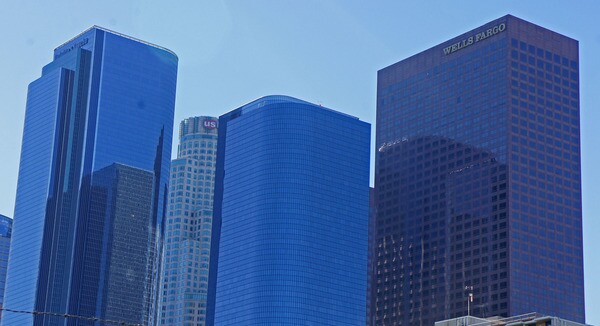L.A.'s Bland Skyline Rules Undone

Editor's note: For the history of L.A.'s flat rooftops, read Laws That Shaped L.A.: Why is the Los Angeles Skyline So Bland?
New skyscrapers in Los Angeles will no longer be required to have helipads under revisions announced today by city leaders, clearing the way for Los Angeles high-rises to be built with angled or pointed roofs.
"Los Angeles is the creative capital of the world, but our skyline is full of buildings that are uniformly flat," said Mayor Eric Garcetti, who joined Councilman Jose Huizar and fire Chief Ralph Terrazas atop the AT&T Center building to announce the changes to a decades old rule requiring rooftop helipads.
"We want better fire protection and better design from our buildings," he said. "We must always be innovating, and that's what this policy does."
The revised policy exempts new buildings between 420 and 1,000 feet tall from the helipad requirement, giving architects the freedom to design spired, angled, or other non-flat roofs.
The buildings would instead need to have stairways, elevators, automatic sprinkler systems, and video cameras that ensure safety, access, and escape routes for firefighters and building occupants during emergencies.
Los Angeles is home to 745 of the state's 1,700 high-rises, and it is the only city in America that requires flat rooftop helipads, according to the mayor's office.
Huizar, who worked to allow the under-construction Wilshire Grand hotel to include a modified helipad and a 100-foot spire, said the new policy will prioritize"fire-life safety and the protection of our citizens and firefighters."
The 73-story Wilshire Grand will be 1,100 feet when built, surpassing the height of the U.S. Bank Tower, currently the tallest building in Los Angeles at 1,018 feet.
"After decades of drab, flat-roof designs, the skyscrapers of tomorrow will be bold, unique and imaginative, matching the (city's) well-earned reputation as the creative capital of the world," Huizar said.
Terrazas said "the new design options for high-rise buildings will allow for innovation and technology to transform the Los Angeles skyline while simultaneously strengthening the life-safety protections of these new structures."
"We will leverage today's technology and design features to build the safest buildings in the world," he said.


